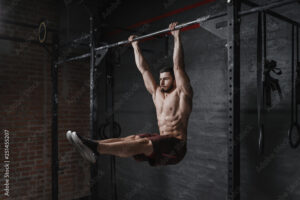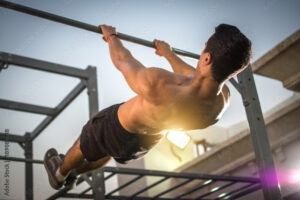Best Calisthenics Exercises For Beginners
Mastering Calisthenics: Best Calisthenics Exercises for Beginners
Embarking on a journey into the world of calisthenics can be both exciting and daunting, especially for beginners eager to sculpt a stronger, fitter physique. With the right guidance and structured approach, mastering calisthenics exercises can become a rewarding and transformative experience. In this comprehensive guide, we’ll explore essential exercises and progressions tailored specifically for beginners, along with expert tips on warming up effectively and selecting the appropriate exercises based on your fitness level.
Best Calisthenics Exercises for Beginners: Building a Strong Foundation
1. Pushup Progressions:
Wall Pushups: Stand facing a wall, place your hands shoulder-width apart at shoulder level, and perform pushups against the wall.
Incline Pushups: Place your hands on an elevated surface such as a bench or sturdy chair, maintaining a straight line from head to heels as you perform pushups.
Knee Pushups: Start in a plank position with knees resting on the ground, perform pushups while maintaining proper form and control.
Standard Pushups: Transition to performing pushups on the toes, maintaining a straight line from head to heels throughout the movement.
2. Pullup Progressions:
Active Hang: Begin by hanging from a pull-up bar with an overhand grip, focusing on engaging the shoulder blades and maintaining a tight core.
Assisted Pullups: Use a resistance band looped around the bar or a chair placed beneath the bar to assist with pullups, gradually reducing assistance as strength improves.
Negative Pullups: Jump or step up to the top position of a pull-up and slowly lower yourself down with control, focusing on the eccentric phase of the movement.
Full Pullups: Once strength and proficiency are gained, aim to perform full pull-ups with proper form, emphasizing a full range of motion and controlled movement.
3. Inverted Row Progressions:
Horizontal Bodyweight Rows: Set up a sturdy bar at waist height, grab the bar with an overhand grip, and position yourself underneath at an angle, then pull your chest towards the bar.
Incline Bodyweight Rows: Adjust the angle of your body by elevating your feet on a bench or sturdy surface, increasing the intensity of the rowing movement.
Single Arm Rows: Progress to single-arm rows using a suspension trainer or gymnastics rings, focusing on maintaining stability and control throughout the movement.
4. Squat Progressions:
Bodyweight Box Squats: Start by sitting back onto a sturdy chair or bench, then stand up using your legs, focusing on proper squat mechanics and depth.
Assisted Squats: Hold onto a stable surface such as a door frame or railing for support as you perform bodyweight squats, gradually reducing assistance as strength and mobility improve.
Bodyweight Squats: Perform standard bodyweight squats with feet shoulder-width apart, focusing on proper form, depth, and control throughout the movement.
5. Lunge Progressions:
Stationary Lunges: Start with stationary lunges, stepping forward with one foot and lowering the back knee towards the ground, then return to the starting position.
Reverse Lunges: Step backward with one foot into a lunge position, lowering the back knee towards the ground, then return to the starting position.
Walking Lunges: Perform walking lunges by alternating steps forward with each foot, maintaining proper form and control throughout the movement.
6. Core Exercise Progressions:
Plank: Begin with a standard plank position, maintaining a straight line from head to heels while engaging the core muscles.
Leg Raises: Lie flat on your back with arms by your sides, raise your legs towards the ceiling while keeping them straight, then lower them back down with control.
Russian Twists: Sit on the ground with knees bent and feet flat, lean back slightly and rotate your torso from side to side while holding a weight or medicine ball.
Warming Up Properly for Calisthenics Workouts
Before diving into your calisthenics workout, it’s crucial to warm up your body adequately to prevent injury and prepare your muscles for action. A dynamic warm-up routine that includes movements such as arm circles, leg swings, hip circles, and shoulder rotations can help increase blood flow, improve flexibility, and activate key muscles used during calisthenics exercises. Spend at least 5-10 minutes performing dynamic stretches and mobility exercises to prime your body for optimal performance.
Choosing the Right Exercise Progression for Your Fitness Level
When selecting calisthenics exercises, it’s essential to choose progressions that match your current fitness level and ability. Begin with the easiest progression for each exercise and focus on mastering proper form and technique before progressing to more challenging variations. Listen to your body and progress at a pace that feels comfortable yet challenging, aiming to gradually increase intensity and difficulty over time as you build strength, stability, and confidence.
Conclusion: Building Strength, Confidence, and Mastery
In conclusion, mastering calisthenics exercises for beginners is a journey of self-discovery, perseverance, and growth. By incorporating structured progressions, focusing on proper form, and listening to your body, you can build a strong foundation of strength, mobility, and athleticism that will serve you well on your fitness journey. Whether you’re performing pushups, pullups, squats, lunges, or core exercises, remember that consistency and dedication are key to achieving your goals. So lace up your sneakers, embrace the challenge, and embark on the exhilarating path to mastering calisthenics one rep at a time.
Last thing, if you are looking for a complete guide and program with the proper guide for which exercises to include for jumpstarting your calisthenics journey, you should click on this link here. Enjoy!

